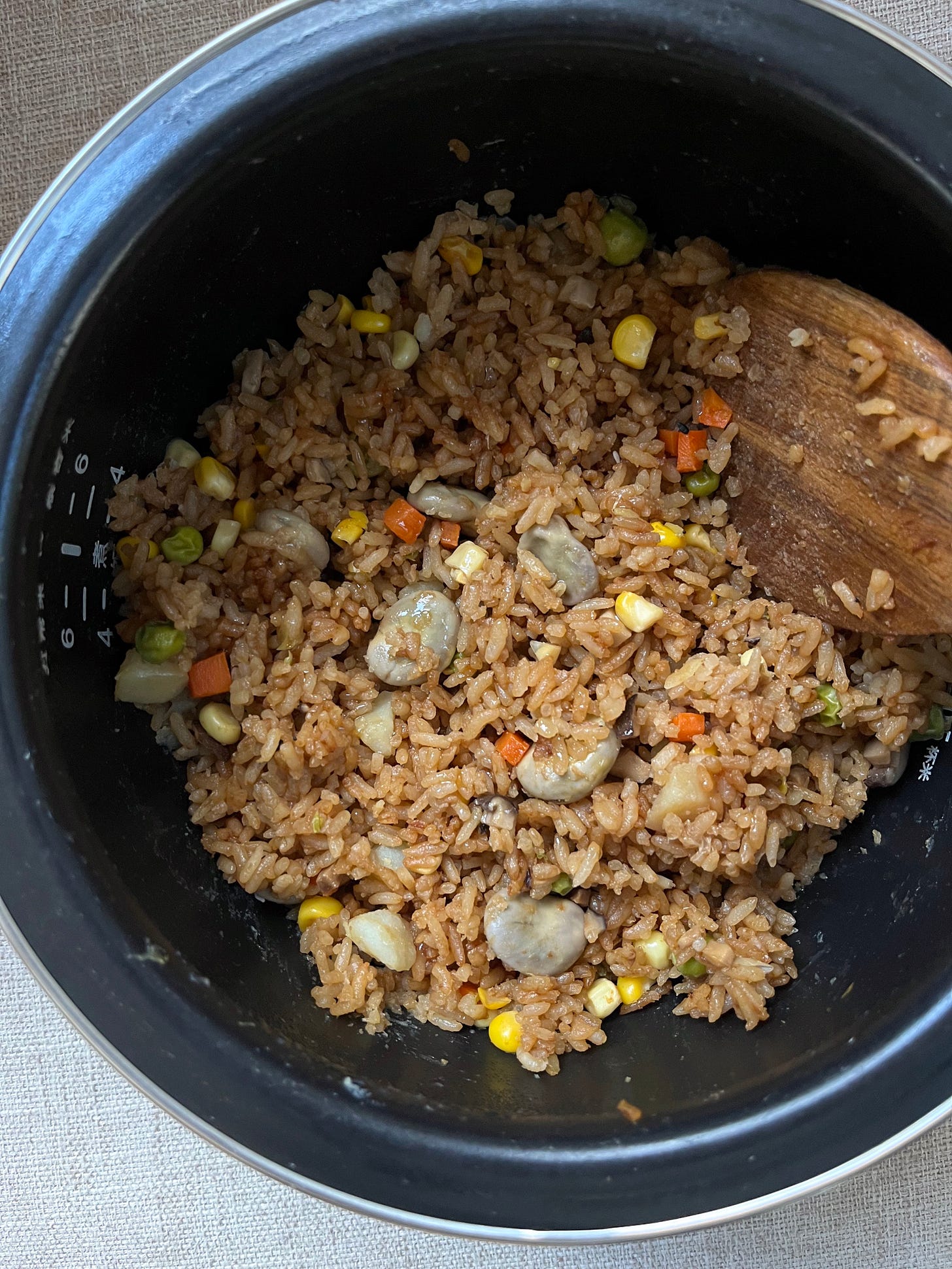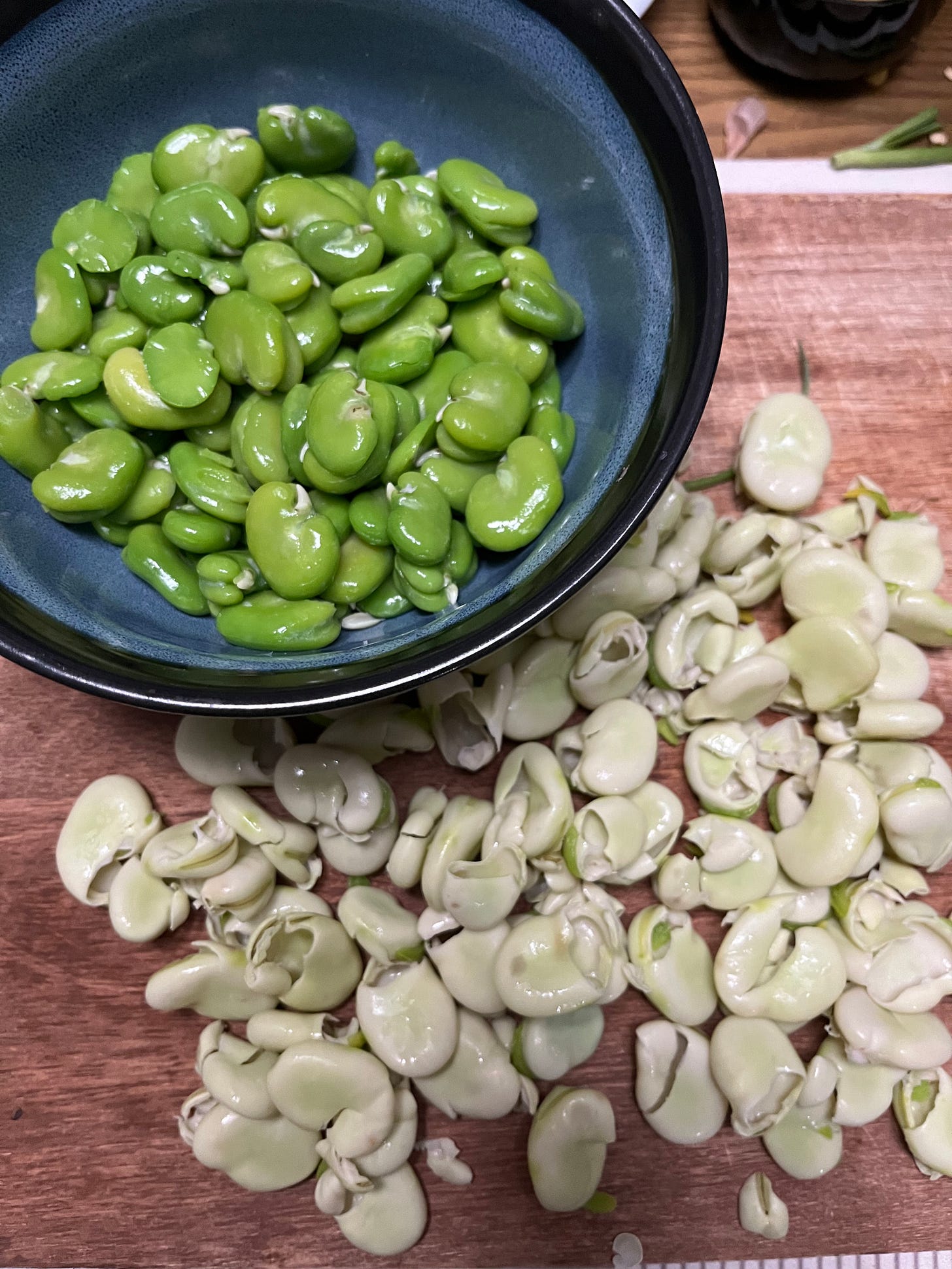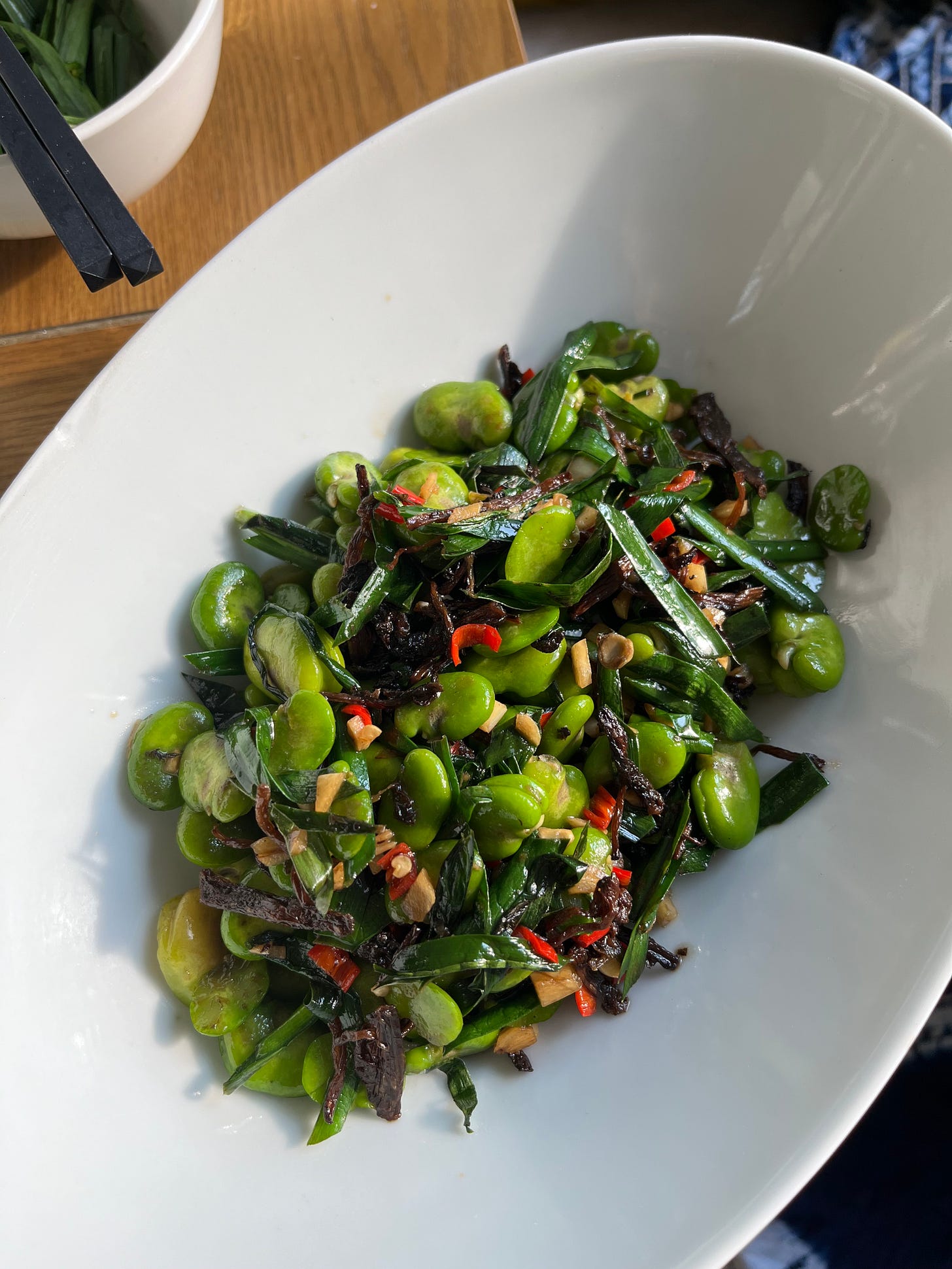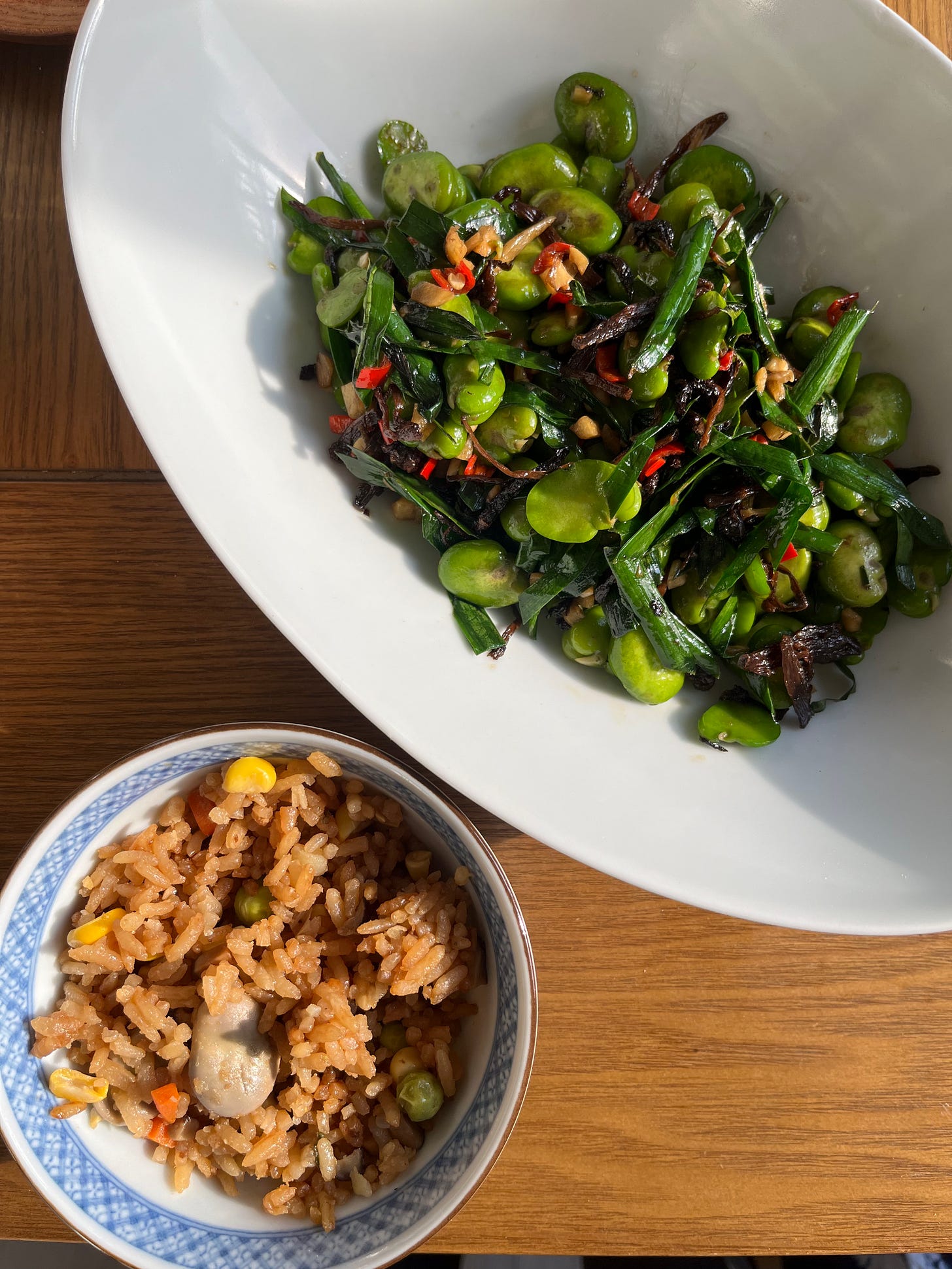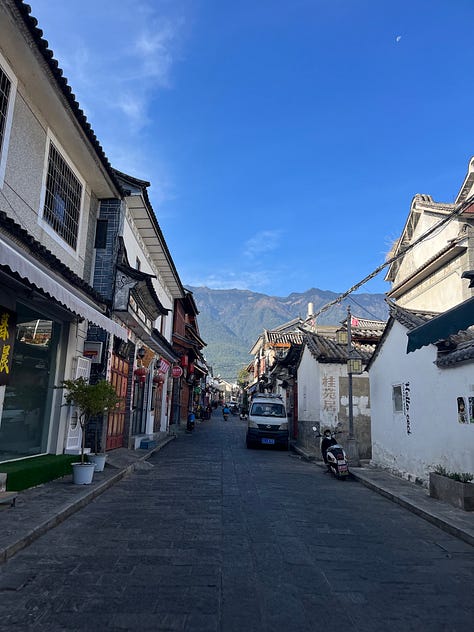

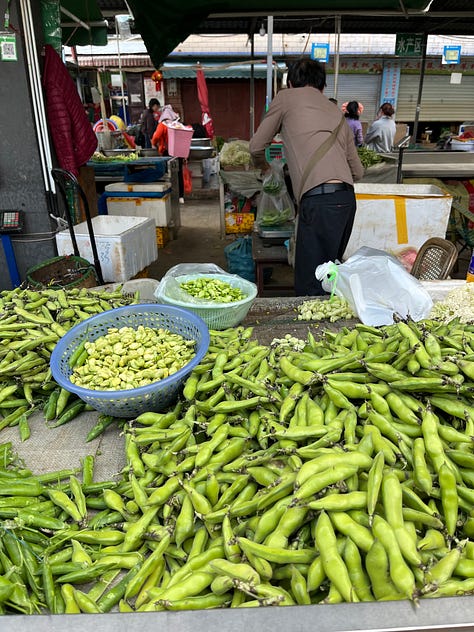
Yesterday I made a big batch of rice in my rice cooker with fava beans, corn, shiitake mushrooms, carrot, and peas. I call this smothered rice, 焖饭. You add your vegetables of choice: maybe a potato, or a whole tomato, the seasonings, and enough water to cover the rice (exact recipe below); when the rice cooker beeps and the rice is done so are the vegetables. Stir together, smash up the potato and the starchy beans, and enjoy.
In Dali Gucheng a large dog lolls on the floor in the coffee shop, napping in the heat of the afternoon. His belly rises and falls with short, shallow breaths, like a child who is pretending to be asleep. A barista drops a spoon and the dog opens one eye. Outside the vendors are sitting by their tarps, shelling fava beans. Business is slow today.
I realized I’ve been calling fava beans wrong for years. I used to say “chan-doh” (馋豆), but the Chinese name is “silkworm bean” or can dou, pronounced “tsan-doh” (蚕/蠶豆). The pods resemble the shape of silkworms hanging off leaves, swaddling a row of beans in protective, fuzz-lined walls. Snap the shells and pluck out the chubby beans, drop them in boiling water and peel off their pale jackets, and you’re left with a handful of beans, lurid green and perfect like little organs. They’re the greenest green imaginable, like spring candy.
I love the fava bean’s duality of textures. The green, tender beans are mild and slightly sweet, with a clean bite to them like edamame. My parents are from northern China and they would cook the mature beans, braising or boiling them whole, until the flesh was starchy and the skins wrinkly and slightly chewy. In college I was obsessed with deep-fried fava beans, sold in snack packs in Asian supermarkets (酥蚕豆)— they’re addictive like corn nuts, sheathed in crackly, brittle tan skins that leave your fingers greasy with salt.
When I lived in Portland, fresh fava beans appeared in the farmers markets around April and on menus throughout June. Chefs were obsessed and cooks were disgruntled because we were the ones peeling them for service. Usually we’d saute the beans with a touch of olive oil and lemon, or grind them into a puree for a pesto or ravioli filling. I remember a pop-up with a Japanese restaurant where the chef made a puree of blanched fava beans and squeezed it in bright green dots onto sushi rolls. We passed the piping bag around after service, shooting trails of green puree into our mouths. I finally understood the hype— fava beans taste like spring. They’re elusive and highly seasonal and require precious labor.
That’s why the abundance of fava beans is such an event. In China, fava beans, like spring peas or green soybeans, are treated as vegetables, usually stir-fried whole with fermented mustard greens— something darker and funkier to bolster their mealy, buttery sweet earthiness. Shanghainese people like to stir-fry fava beans with scallions and scallion oil, keeping them slippery and tender. My favorite combination is garlic chives and meigancai— fermented Hakka mustard greens that are steamed and sun-dried three times until they turn dark like the earth and salty like seaweed. The chiles add a touch of heat.
Stir-Fried Young Fava Beans with Chives & Chiles
Serves 4





